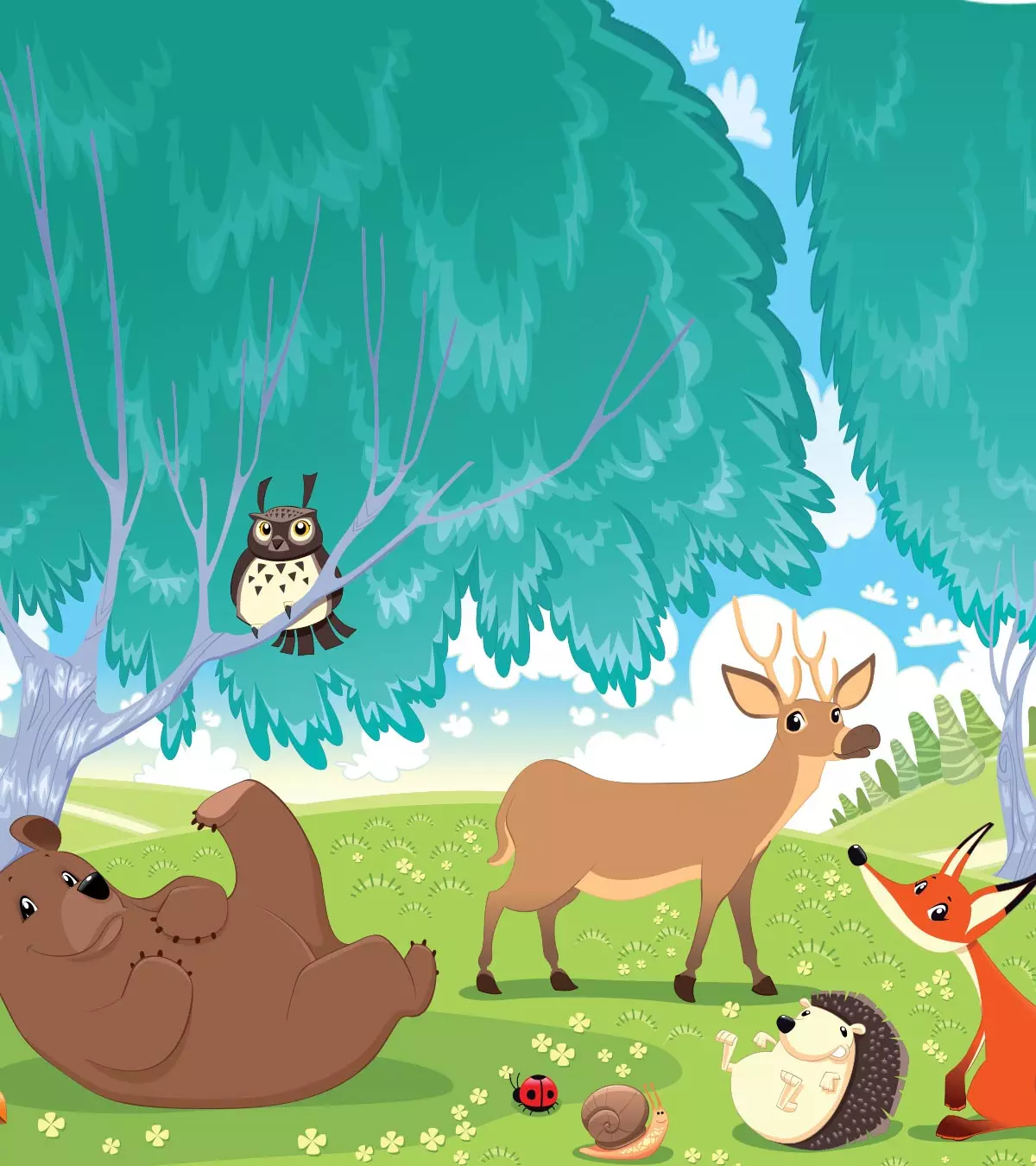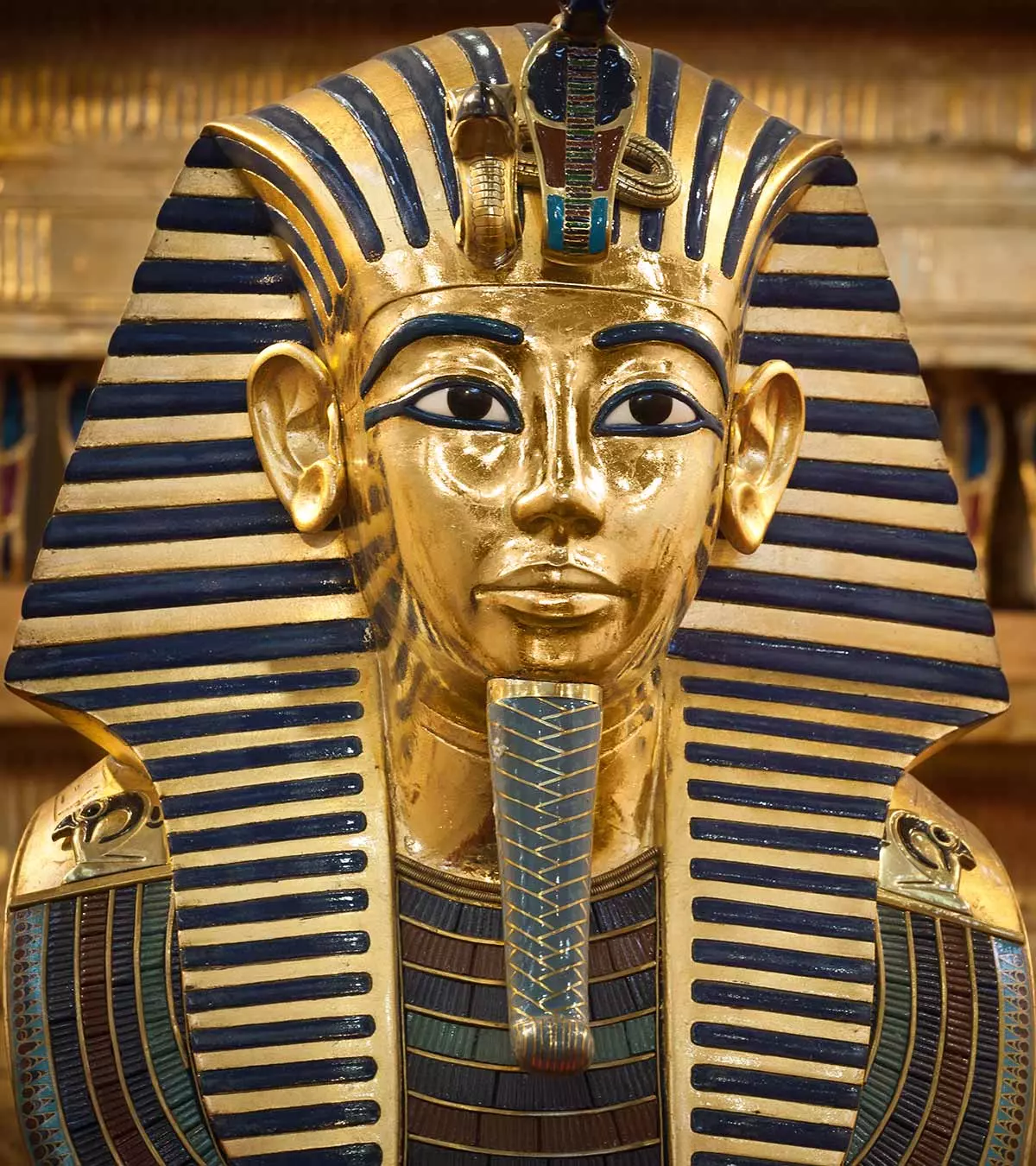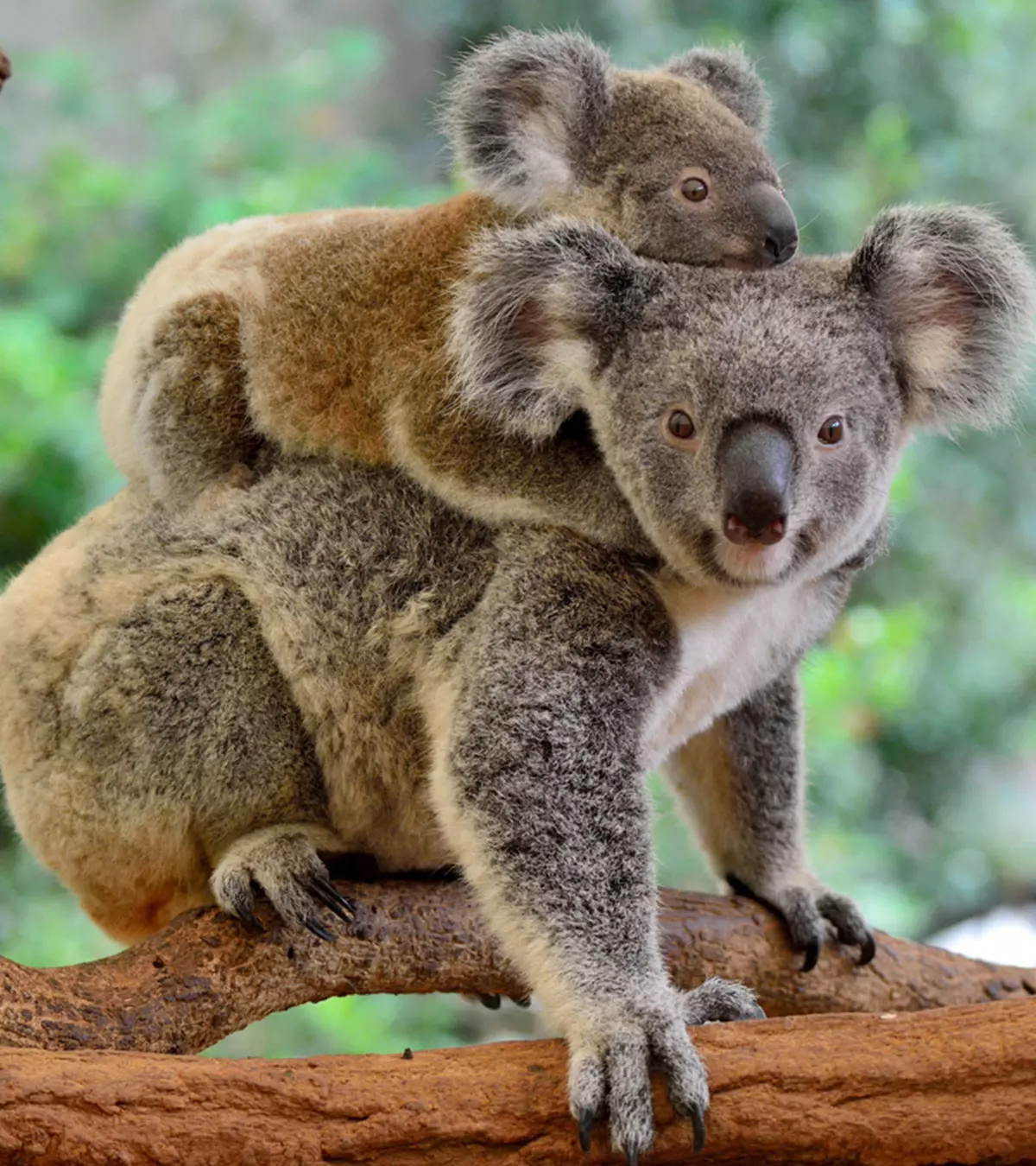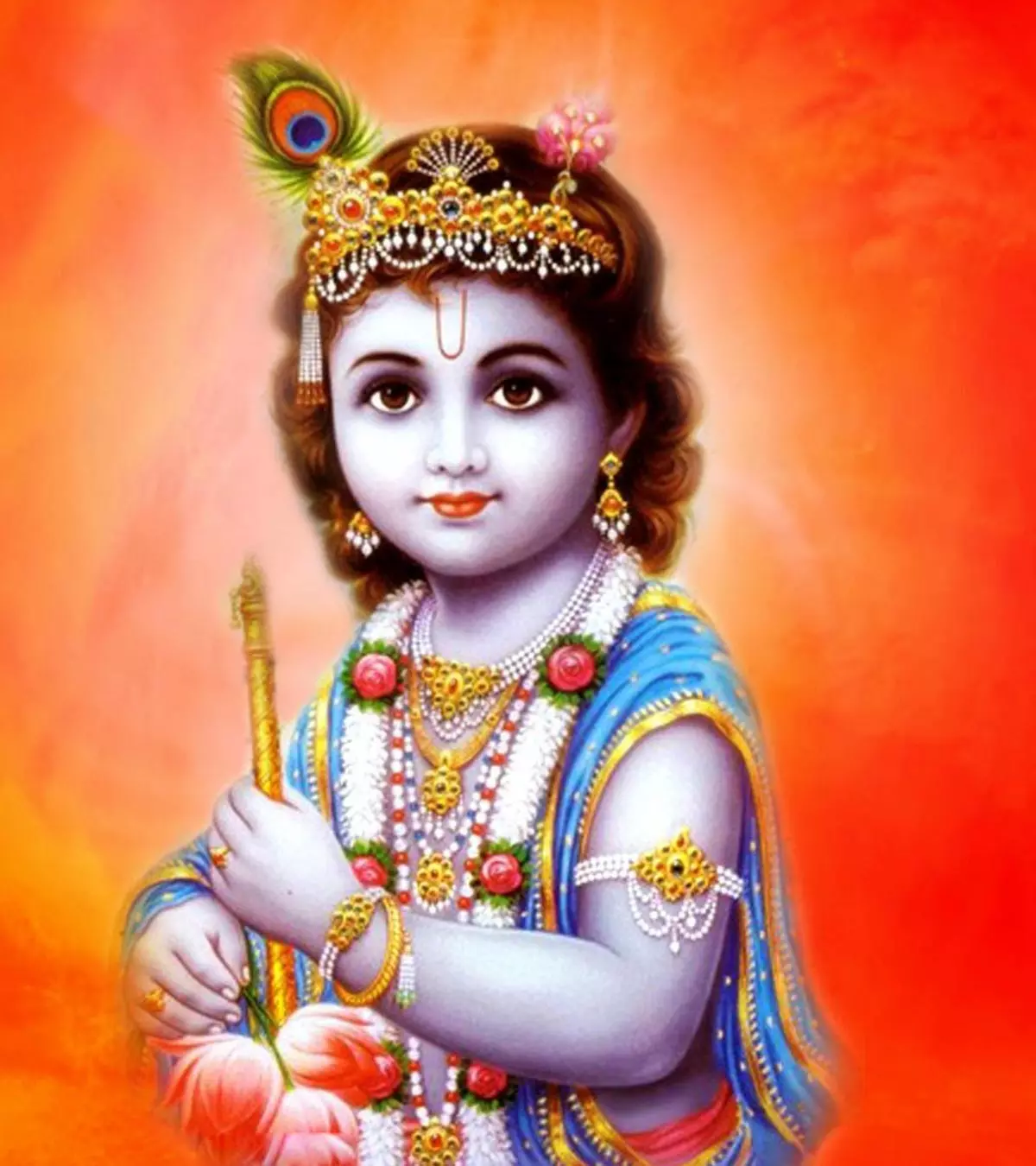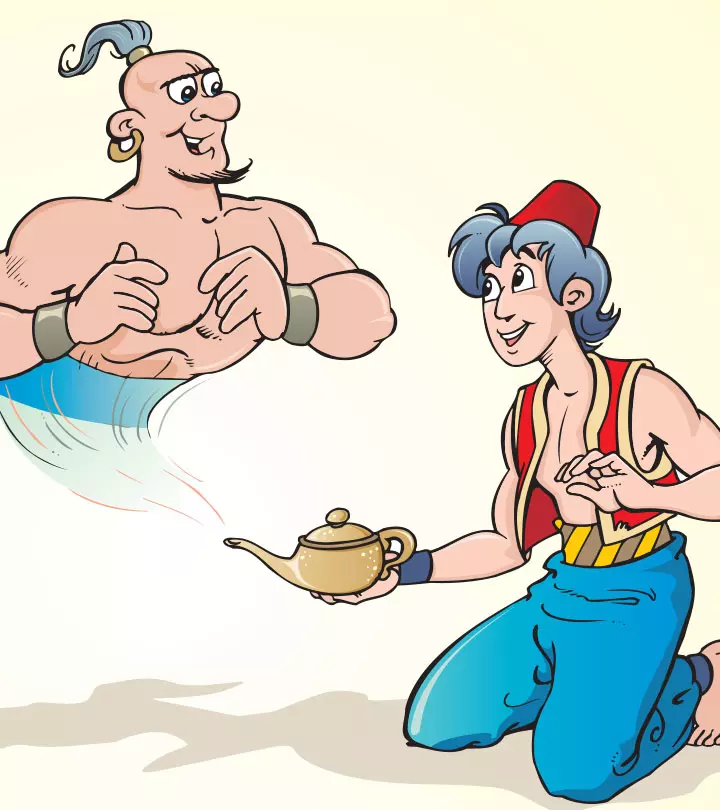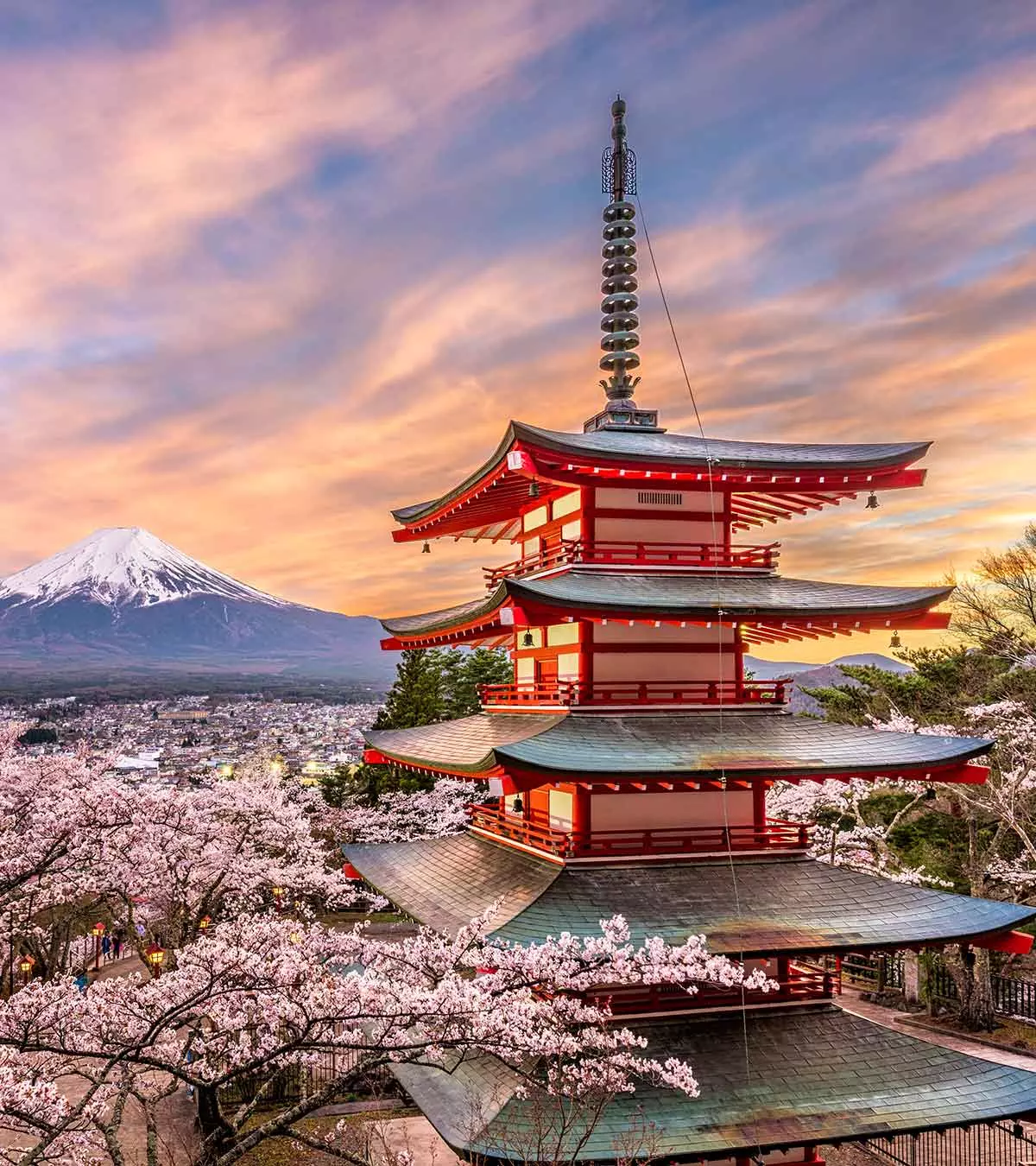
Image: ShutterStock
One of the most developed countries globally, Japan is known for its innovative and advanced technologies.

We bring you some interesting facts about Japan for kids to educate them about one of the world’s oldest civilizations. Known as the land of the rising sun, Japan is a small Asian country with one of the biggest economies. The country that holds great dominance and influence over the world is represented by a flag with the crimson sun in its center. Scroll through for more fascinating facts about Japan to help children learn about its heritage and value.
Key Pointers
- There are many interesting facts about Japan, its culture, people, and food for children to learn.
- Making slurping sounds while eating noodles is acceptable and considered rude if not.
- Japan, the land of the rising sun, was originally spelled as Giapan, where 80% population follow Shinto.
- It is home to 110 active volcanoes and many more fascinating facts as you scroll below.
Name And Foundation Of Japan
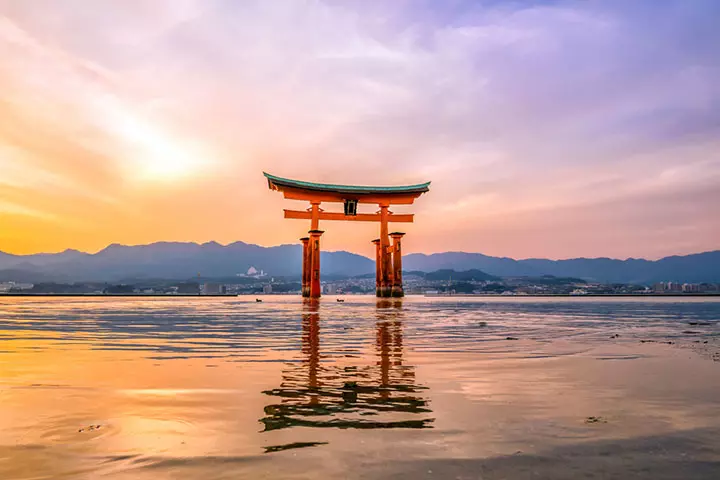
Listed below are some interesting and fun facts about Japan.
- The Japanese call their country ‘Nihon’ or ‘Nippon,’ which means the ‘Land of the Rising Sun.’
- Did you know that it was the Portuguese who introduced the rest of the world to the name Japan? The Portuguese traders who visited Southeast Asia heard from locals a place called Japun, which is the name of Japan in the Malay language. The Malay name itself was derived from the Chinese name Zeppen.
- 16th-century Europeans spelled Japan as Giapan, which eventually was modified to the spelling we know today.
- The first mention of the country in the English language comes from a book written in 1577, where the country is referred to as Giapan.
- Emperor Jimmu is considered to be the first ruler of Japan. He ascended the throne on 11th February 660 BC. This day is now celebrated as National Foundation Day and is a national holiday.
Geography Of Japan

- Japan is made of more than 6,000 islands, which makes Japan an archipelago, a term used for a group of islands.
- Japan lies at the junction of four tectonic platesiPieces of irregular slabs of the Earth’s outer layer that keep moving slowly of the earth. It makes the country vulnerable to earthquakes as these tectonic plates shift regularly.
 Did you know?
Did you know?- The island country gets more than 1,000 earthquakes in a year although not all of them have devastating results. Mild tremorsiAn involuntary movement or shaking, such as those that occur in an earthquake are felt almost every day.
- Japan is divided into eight regions for the political overview. There are a total of 47 prefectures (administrative divisions) in the entire country.
- Mount Fuji is the tallest mountain in Japan, with a height of 3,776.24 meters. It is a dormant volcano, but scientists say that there is still a risk of eruption, albeit quite low.
- There are 110 active volcanoesiA volcano that is either erupting or can erupt in the future in Japan!
- The word TsunamiiGiant waves that form when a large volume of water is displaced from oceans, especially due to an earthquake comes from Japanese, and it means ‘harbor wave.’ Being in an earthquake-prone zone, Japan has a long history of experiencing Tsunamis.
Japan’s People And Culture

- Japanese bow instead of shaking hands. There are three unique ways of bowing to greet a person. They are called Eshaku, Keirei, and Saikeirei, each with a purpose and for relevant social occasions. Each bow is also unique by the angle you bend your torso!
- Shinto is the main religion of Japan followed by 80% of the population. It is a religion of intricate rituals with several variations to it. Other religions with significant followers in Japan are Buddhism and Christianity.
- Japan is known for Sumo wrestling, which is a sport almost 1,500 years old. Sumo is the national sport of Japan.
- Baseball is the second most popular sport in Japan after Sumo and the most popular spectator sport. Baseball was introduced in Japan in the year 1872 by an American called Horace Wilson who worked as an English teacher in Tokyo.
- Did you know, four is an unlucky number in Japan? You may find buildings that may not have a labeled fourth floor or a row of numbered houses where numbers jump from three to five. This is because the pronunciation of number four is very similar to the pronunciation for the word ‘death.’
- Japanese traders and businesspeople, who cannot go without number four, will use an alternative pronunciation for number four.
- Black cats are considered good luck charms in Japan. Having your path crossed by a black cat in Japan is a good omen.
- Ohaguro is a tradition of blackening the teeth, especially by the women. Teeth are painted using plant and iron-based inks. Blackening of teeth has gone out of fashion and has little occurrence in modern Japan.
- The Chrysanthemum flower is of significance for the Japanese. Flower shows are regularly organized to display the various varieties of the flower. A sketch of the flower is also the official seal of the emperor and the imperial family.
 Did you know?
Did you know?- Onsen is a Japanese hot spring bath where you can bathe and relax in a large outdoor or indoor pool of water. Onsen could be a public one owned by a municipality and accessible to the public, or privately owned by a hotel or resort.
- Did you know, you are not allowed at an Onsen with tattoos? Tattoos in Japan are seen as a symbol of the members of the Yakuza, which is the Japanese mafia. Onsen owners prohibit tattoos to refrain from mixing with the mafia. Several bathhouses do allow tattoos if the person is a foreigner, a tourist for instance.
- The Tale of Genji is a 12th-century novel from Japan written by the noblewoman Murasaki Shikibu. It is considered to be the world’s first-ever novel.
- Haiku is a form of poetry from Japan that contains only three lines. It is considered the shortest form of poetry.
- The Japanese call New Year’s Eve Omisoka. All Buddhist temples strike the temple bell 108 times at the stroke of midnight. The ringing of the bell is believed to get rid of the 108 human sins stated in Buddhist beliefs.
- According to the Japanese, the call of a dog is not ‘bow-wow’ but ‘wan-wan.’
- Akita is a dog breed that originates from Japan. Hachiko was a famous Akita dog who waited nine years at a railway station for the return of his master who died suddenly at work. A statue of Hachiko stands today outside the railway station located in Tokyo.
- Tanabata, or ‘star festival,’ is a unique Japanese festival celebrated on the 7th day of the 7th month. People celebrate by writing their wishes in poetry on small pieces of colored paper called tanzaku and hanging them from bamboo plants. These plants are set afloat on a river after the festival.
- Hanami is a traditional custom of viewing and enjoying flowers, mainly during spring when cherry blossom (sakura) and plum (ume) trees fully bloom. In modern-day Japan, people have picnics or outdoor parties underneath sakura trees.
- Obon or Bon combines a Buddhist custom and a Japanese belief in spirits and involves honoring one’s ancestors’ spirits. In this 3-day festival, people visit their ancestral homes and their family graves to clean them.
- Ikebana is the Japanese art of flower arrangement used to decorate traditional Japanese homes. Besides flowers, it focuses on cut stems and leaves’ shape, line, and form to create an aesthetically pleasing result. It is a disciplined art form taught in schools dedicated to the craft.
Japan is also a trendy tourist destination. Its rich culture, beautiful architecture, and delicious food have attracted people from all over the world. Have a look at the country’s tourism over the last decade. As you can see, the number of foreign tourists visiting Japan surged from 8.6 million in 2010 to 31.9 million in 2019. The contribution of the travel and tourism industry to the country’s GDP is USD 359 billion.
 Source: Japan\'s tourism market expected to grow again post-corona; Japan External Trade Organisation/Japan National Tourism Organization
Source: Japan\'s tourism market expected to grow again post-corona; Japan External Trade Organisation/Japan National Tourism Organization Japanese Food
- Noodles form a part of the staple diet of the Japanese. The Ramen noodles that we all know today originated in Japan. Momofuku Ando from Japan was the inventor of instant noodles and founder of the popular instant noodle brand Top Ramen.
- Japanese eat Pufferfish, which is called Fugu in Japanese. However, several organs of the fish have a toxin that can cause paralysisiA condition in which the body loses its ability to move due to muscle dysfunction on consumption. Therefore, the fish is cut carefully only to get the non-poisonous parts. In Japan, you need to undergo three or more years of training to cut and cook Fugu. You need a license from the government to prepare a Fugu dish and even to sell the fish.
- It is okay to slurp noodles in Japan. It is even considered rude not to slurp noodles! Not slurping your noodles may be regarded as a sign that you do not like or relish the food served to you.

- The Japanese eat everything with chopsticks, or Waribashi in Japanese, made of wood. Chopsticks are disposed of after one use. The Japanese use about 25 billion pairs of chopsticks each year, which makes it 50 billion individual sticks.
- Japanese love their tea. The Japanese tea ceremony involves the elaborate preparation of matcha, which is finely powdered green tea. The Japanese even have green tea-flavored ice creams.
Wui Kathy, a mother of two, discusses her experience while dining at Genki Sushi Kousoku Express. She shares her experience of having DIY tea. She says, “We DIY our Ocha in Genki Sushi by putting two spoonfuls of green tea powder into a cup and filling it in hot water. It tastes nice with a green tea aroma (i)!”
Urban and Modern Japan

- The country has the highest life expectancy in the world for both genders. The average life expectancy for both men and women in Japan is 84 years.
- Japan has a low homicideiAn act of killing a person rate, but the country has numerous cases of suicides. The suicide rate in Japan is several times more than the rate of homicides, which makes suicide a significant national problem than homicide.
- Japan has a higher population of elderly (those above 65 years) when compared to those less than 65 years of age. The elderly comprised 28.1% of the country’s population in 2018.
- Japan has the world’s shortest escalator that is even certified by the Guinness Book of World Records. The escalator is in a departmental store called More in the Japanese city of Kawasaki. The height of the escalator is only 83.4 centimeters (32.8 inches). It helps you cover a distance of 2.7 feet and only has five steps.
- The Japanese were the first to introduce a bullet train in the year 1964. The train was called the Shinkansen train, and it could reach a speed of 210 km/h (130 mph).
- The Tsukiji fish market in Tokyo was the world’s largest fish and seafood market. It sold about 660,000 tonnes of fish and seafood in a year. The market was established in the 17th century and relocated to a new location, with a new name, in the year 2018.
- The Shinjuku Station in Tokyo is the busiest railway station in the world. More than three million people use the station each day! The station has 53 platforms and 200 exits.
- In Japan, it is normal for employees to nap at work. Napping is seen as a sign of dedication and hard work; employees work to the point of exhaustion and hence take a nap. The practice is called Inemuri, which means ‘present while sleeping.’
- The Japanese love phones that are indestructible by water. Almost 95% of phones sold in Japan are waterproof.
- There is a thriving animated industry in Japan that is called Anime. Several television shows and full-length films are produced each year as the anime fan base extends beyond Japan. Japan’s anime television shows account for 60% of the world’s animated television shows. This is one of Japan’s fun facts that has also brought joy and laughter to millions of people.
- Did you know, Japanese films have significantly influenced world cinema? For example, the original Star Wars was inspired by the Japanese film The Hidden Fortress. The popular film monster Godzilla also has Japanese origins, and the Godzilla film franchise is considered to be the oldest in the world.
Frequently Asked Questions
1. Is Japan a child-friendly country?
Japan is a beautiful country that offers several exciting and adventurous experiences. Although the country is generally considered safe and secure, its busy cities, such as Tokyo, aren’t considered kid-friendly from parents’ point of view. However, there are many interesting activities for kids that can make the visit enjoyable for the whole family. Thus, it’s best to understand Japan and its culture, especially around children, before you plan your visit.
2. What is Japan’s national fruit?
Persimmon is Japan’s national fruit. This honey-flavored, sweet fruit is consumed in fresh and dried forms. People consume it as-is or use it to prepare different dishes, such as Persimmon Daikon Salad, Persimmon Shiraae, and Kakisu.
3. Can kids ride in the front seat in Japan?
You can’t ride with your child in the front seat in Japan. The age group isn’t certain, but it is said that children below six years are required to sit in the rear seat on an age-appropriate car seat.
4. What are some popular Japanese children’s games?
Some Japanese children’s games include otedama (juggling bean bags), takoage (kite flying), hanafuda (playing cards with pictures), shogi (Japanese chess), and shiritori (word game where one has to say a word beginning with the same kana as the ending of the previous word).
Japan is a beautiful country with fascinating sites and people. One of the fascinating facts about Japan is that most Japanese people continue to practice the centuries-old practices to date. Thus, there are many interesting facts about Japan for kids to share, including their founding, history, name, people, culture, food, and urban Japan. If you and your children enjoy watching anime and are fascinated by Japan, knowing these facts will kindle your interest in this country and make you feel even more attached to it.
Infographic: Interesting Facts About Japan
Japan is a technologically advanced Asian country that overcame the wrath of atomic bombings during World War II. It has emerged as one of the biggest economies in Asia and continues to show progress. The following infographic lists some fascinating facts about this country.
Some thing wrong with infographic shortcode. please verify shortcode syntaxIllustration: Interesting Information And Facts About Japan For Kids

Image: Stable Diffusion/MomJunction Design Team
Explore the amazing culture of Japan with us! Learn about the food, customs, and traditions of this fascinating country.
Personal Experience: Source
MomJunction articles include first-hand experiences to provide you with better insights through real-life narratives. Here are the sources of personal accounts referenced in this article.
i. Unique Kousoku Express Family Dining Experience At Genki Sushi, Sunway Pyramid! https://mousemommytreats.blogspot.com/2019/02/unique-kousoku-express-family-dining.htmlCommunity Experiences
Join the conversation and become a part of our nurturing community! Share your stories, experiences, and insights to connect with fellow parents.
Read full bio of Samantha Chan
Read full bio of Sravani Rebbapragada
Read full bio of Harshita Makvana
Read full bio of Praggya Joshi








